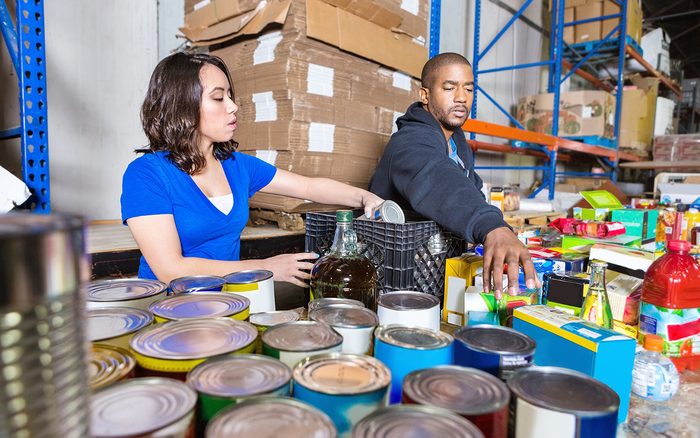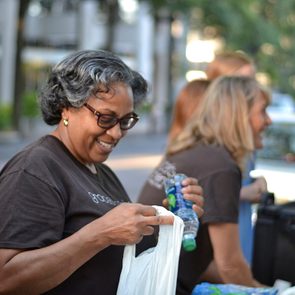Here’s Exactly How You Can Help Your Local Food Bank Right Now
Updated: Dec. 12, 2023

In these uncertain times, your local food bank needs support more than ever.
The coronavirus pandemic has brought a lot of uncertainty to our homes and neighborhoods. As unemployment rises and most Americans are sheltering in place, some people don’t have access to basic necessities like food. We talked with Zuani Villarreal, director of communication at Feeding America, to see exactly how you can help in this difficult time.
Find our entire guide to sheltering in place.
What’s Happening at Food Banks?
“The pandemic is creating a perfect storm for food banks across the country. More people need food, yet less food is donated,” says Villarreal.
When shoppers stockpile staples at home, stores are unable to donate extra items to food banks. That’s a problem because retail food donations account for around 35% of the food distributed through Feeding America!
How Can You Help Your Local Food Bank?
“The most effective way for people to support food banks right now is through a financial donation,” says Villarreal.
Food banks can use your donation to fulfill their exact needs efficiently. Having access to funds allows the staff at food banks to rise to the occasion as needs and situations shift. For example, people may need food immediately but have a long-term need for home items like cleaning supplies and toilet paper.
During this time when the future is unclear, monetary donations prepare food banks to swiftly pivot to tackle needs in the community as they arise.
Feeding America has a national fund that goes to support COVID-19 responses nationwide. You can also donate directly to your local food bank (locate it here).
“Any donation—big or small—will support food banks across the country and help them secure the resources they need to serve the most vulnerable neighbors of their communities,” says Villarreal. “Whether it’s to the national fund or local food bank or pantry, people who donate will help their neighbors in need.”
What Are Other Ways to Support Your Local Food Bank?
Before collecting items to donate, it is best to reach out to your local food bank to see what they need. Feeding America has a registry that makes it easy to locate and contact the food bank closest to you.
Do not attempt to donate home cooked or baked goods, though. Food pantries can only accept items in their original packaging.
When browsing your pantry at home or making a shopping list, remember that food banks can accept unopened, non-perishable items, so skip the refrigerator and freezer aisles. Instead, check out this list of essential foods to donate—they’re always appreciated.
Food banks in some communities also need volunteers, especially as older volunteers choose to stay home. Contact your local food bank to see how you can volunteer—and don’t forget to be patient. The staff is thankful for your help, even if they aren’t able to respond right away.
Is It Safe to Donate or Volunteer at Food Banks?
“Donations packaged in cardboard boxes or plastic bags are safe. There is no evidence that food is associated with transmission of COVID-19,” says Villarreal. You can also ask about guidelines put in place at your community drop-off locations to make sure your donation is as safe as possible.
It’s also safe to volunteer at food banks as long as you follow the guidelines outlined by the CDC and Feeding America. “We first and foremost want volunteers to be safe and do everything they can to protect their health and that of the community,” says Villarreal.
How to Support Your Food Bank Without Donating
While local food banks desperately need help in the form of financial contributions and food, it’s understandable that not everyone can give at this time.
“We know not everyone can make a monetary donation, but people can also support their local food bank by raising awareness on social media and advocating for support at the federal level,” says Villarreal.
To stay up to date, support efforts nationwide and learn more about Feeding America’s response to this pandemic, visit feedingamerica.org/covid19.
Next up: More ways you can help your community


